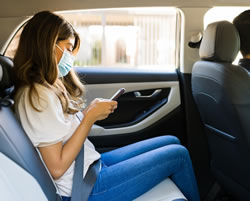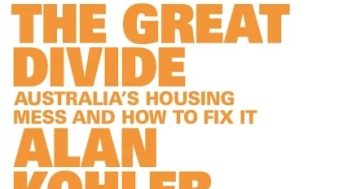Rachael Evans and Cassie McCullagh* share their tops tips on how to avoid surge pricing on rideshare apps.
 Surge pricing on ridesharing apps happens when the demand for drivers outweighs the number of them available.
Surge pricing on ridesharing apps happens when the demand for drivers outweighs the number of them available.
According to Uber’s website, it’s algorithm-controlled, and when there is a sudden increase in rider requests, “surge pricing automatically takes effect” to give drivers “an incentive” to pick up jobs, but also force a reduction in “rider demand” as many won’t pay premium prices.
DiDi uses the term “dynamic pricing” when fares may be “slightly higher” than usual due to an increase in demand and lack of available drivers.
They say customers will be notified on the app when this is occurring.
Ola labels the hike “peak pricing” and say this occurs due to “a variety of factors such as office rush hours, heavy rain, holiday or a local event can cause a rise in demand for cabs.”
This explains why you may have been charged an exorbitant fee coming home from a night out, or noticed you paid more than usual on a trip during a 9am rush.
So, what should you do when you encounter surge pricing?
Should you take a taxi instead?
There are some pros and cons to weigh up if you’re thinking about whether or not you should choose a ridesharing app or taxi for your journey.
Graham Cook, head of research at Finder, a consumer comparison website, says that one benefit of ridesharing apps is that you receive a quote of the fare before you get in the car — so you can choose to accept or reject a higher fare during a price surge.
Uber, in particular, will let you know when rates are raised due to surge pricing.
With taxis on the other hand, you won’t know the total cost until you reach your destination, as they run on the meter.
Unlike ride-sharing apps, the taxi industry is heavily regulated in Australia.
In New South Wales, taxi service providers are not allowed to charge anyone who catches a taxi from a taxi rank, or hails one from the street more than the maximum fare — unless they are travelling outside of the taxi’s area of operation.
Transport NSW stipulates that a visible fare calculation device (such as a meter) must be turned on and running during your trip.
CEO of the Australian Taxi Industry Blair Davies, says taxis “do not engage in surge pricing.”
Some ABC Radio Sydney listeners reported experiences of high pricing:
It’s worth checking your state’s taxi rates, and you can also use the 13cabs app, which works similarly to other ridesharing apps.
Tips for using ridesharing apps
There are several different ridesharing apps and those we looked at acknowledged that surge pricing occurs to manage demand.
If you’re thinking about taking one of those, here are a few tips on avoiding the hike in prices.
- Timing is key on ridesharing apps: surge pricing often occurs during rush hour, bad weather, public holidays and special events.
- Both Ola and Uber suggest waiting a couple of minutes and trying to book again to see if the price has lowered.
- Shop around: while surge pricing is relatively consistent across most of them, Mr Cook says it can help to check all ride-sharing apps before your trip as often they won’t all have a surge at the same time.
*Rachael Evans is a Digital Producer at Australian Broadcasting Corporation. Cassie McCullagh is a presenter, journalist and writer for ABC’s Radio National.
This is an abridged version of an article that first appeared at abc.net.au.



